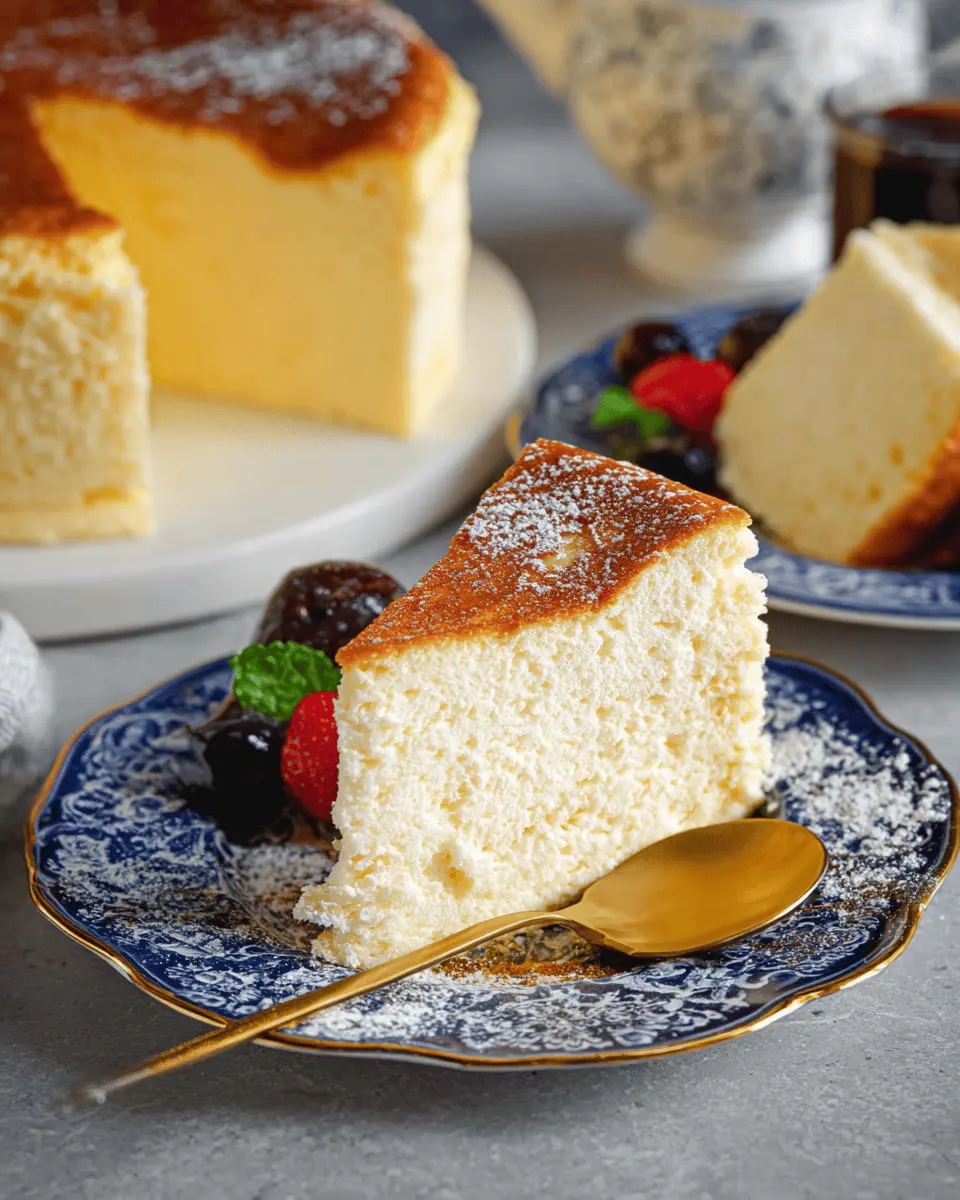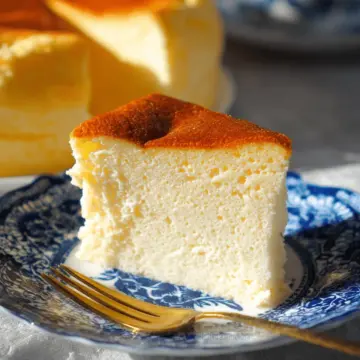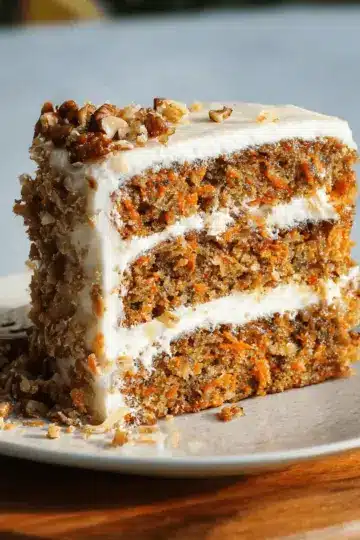Introduction to Japanese Cheesecake
What is Japanese Cheesecake and Why is it Loved?
If you’ve ever craved a dessert that feels like a warm hug, look no further than Japanese cheesecake! This delightful treat, often dubbed soufflé cheesecake, is celebrated for its jiggly, airy texture and melt-in-your-mouth flavor. Unlike the dense cheesecakes commonly found in Western cuisine, Japanese cheesecake boasts a lightness that makes it irresistibly unique.
So why is this dessert capturing hearts all around the globe? It beautifully combines the richness of cream cheese and butter with a fluffy cake-like structure, resulting in a dessert that's both indulgent and light. The addition of lemon juice adds a subtle tang, balancing the sweet and creamy elements perfectly.
Japanese cheesecake has gained immense popularity not just for its taste, but also for its visually appealing look—who can resist that beautiful, golden-brown top? It's a favorite in cafes across Japan and is increasingly becoming a must-try item for chefs and home bakers alike.
For those eager to dive into making this enchanting dessert, you're in the right place! In this article, I'll share my step-by-step recipe for a Japanese cheesecake that'll leave your friends and family weak at the knees. Let's get started!

Ingredients for Japanese Cheesecake
Creating a fluffy and delightful Japanese cheesecake requires just a handful of carefully chosen ingredients that work in harmony to achieve that iconic texture. Here’s what you’ll need:
- Unsalted Butter: 1 tablespoon for greasing the pan and 4 tablespoons for the batter. This rich fat adds creaminess.
- Large Eggs: 6 eggs (approximately 50 g each, without the shell), separated into yolks and whites. They are essential for aeration.
- Cream Cheese: 10.6 oz (a block of full-fat Philadelphia is great). It gives the cheesecake its rich flavor.
- Heavy Cream: 200 ml (¾ cup + 4 teaspoons), which adds to the lushness of the cake.
- Sugar: A total of 4½ tablespoons for the cream cheese mix and an additional ½ cup for the egg whites. This enhances sweetness and stability.
- Cake Flour: ⅔ cup, providing the perfect structure without heaviness.
- Lemon: Zest and juice from ½ lemon add a refreshing tang.
- Apricot Jam: 2 tablespoons for glazing, lending a touch of shine and taste.
Gather these, and you’re one step closer to experiencing a slice of cloud-like bliss! For more tips on selecting quality ingredients, check out this guide on baking essentials.
Preparing Japanese Cheesecake
Creating a delightful Japanese Cheesecake is as much about the process as it is about the final product. This fluffy, jiggly dessert requires a bit of prep work, but trust me, the end result is totally worth it! Let’s dive into a step-by-step approach to ensure your cheesecake turns out perfectly every time.
Prepare the Cake Pan
Start with a 9-inch (23 cm) cake pan that’s about 4 inches (10 cm) high. Cut your parchment paper into two forms: a circle for the bottom and a long strip for the sides. Grease both the bottom of the pan and one side of the parchment using 1 tablespoon of unsalted butter. This ensures that your cheesecake won’t stick. Crisscross the two straps at the bottom—this makes it easier for you to lift the finished cake out later.
Preheat the Oven and Set Up a Double Boiler
It’s essential to preheat your oven to 350ºF (180ºC). For those using a convection oven, decrease the temperature by 25ºF (15ºC). Now, let’s prepare your double boiler: fill a medium saucepan with about 2 inches (5 cm) of water and bring it to a simmer. This gentle heat will be perfect for melting the cream cheese and butter in the next step.
Gather and Measure the Ingredients
You’ll want to have everything ready before you begin cooking. Measure out your ingredients precisely, including six large eggs, cream cheese, and cake flour. Utilizing a kitchen scale is best for accuracy. Make sure you separate the eggs into yolks and whites, placing the whites in the refrigerator.
Make the Cake Batter
In a large bowl, mix your softened cream cheese, unsalted butter, heavy cream, and sugar over the double boiler. As everything warms up, mash and blend until it’s all smooth. Gradually whisk in each egg yolk, followed by sifting in the cake flour, lemon zest, and juice. Passing your batter through a fine-mesh strainer will create that silky texture you desire in your Japanese Cheesecake.
Beat and Incorporate the Egg Whites
The egg whites are crucial for that airy lift. Ensure your mixing bowl is clean and dry—the slightest bit of fat can sabotage your whipped egg whites. Beat until they reach firm peaks, then gently fold them into your cream cheese mixture in three portions. This layer-by-layer method keeps your mixture light and fluffy.
Bake the Cheesecake
Pour the batter into your prepared pan and tap it gently to remove any air bubbles. Place it into the oven on top of the baking sheet you set up earlier. Lower the temperature to 320ºF (160ºC) and bake for about 70-75 minutes. You want the top to turn a lovely golden brown.
Cool and Glaze the Cheesecake
After baking, turn off the oven but leave the cake inside for about 15-20 minutes, with the door ajar, to prevent it from collapsing. Lift the cheesecake out using the parchment straps and apply your apricot glaze for a shiny finish. Let it cool to room temperature before placing it in the refrigerator to chill for at least 4-6 hours or overnight.
Following these steps will help you make a stunning Japanese Cheesecake that’s sure to impress! Be sure to check out additional resources on techniques for baking cheesecakes to refine your skills further. Happy baking!

Variations on Japanese Cheesecake
Flavored Japanese Cheesecake
If you want to elevate your Japanese cheesecake experience, try adding some unique flavors. Vanilla extract can bring a classic twist, while matcha will introduce an earthy depth. Don’t shy away from experimenting! Infuse your batter with coffee or swirl in melted chocolate for a decadent twist. A hint of almond extract can also bring a lovely nutty essence. The key is to ensure the flavor complements the creamy base without overshadowing it.
Japanese Cheesecake with Fruits
Incorporating fruits can add a refreshing balance to the rich texture of Japanese cheesecake. Popular choices include fresh berries, like strawberries and blueberries, which can be folded into the batter or used as a vibrant topping. For something different, consider using tropical fruits like mango or passion fruit. A fruit glaze can also enhance the flavor further. Simply heat fruit puree with a bit of sugar, cool it, and pour over your cheesecake for an irresistible finish.
For some fantastic fruit combinations and inspiration on serving techniques, check out Bon Appétit, where culinary creativity thrives!
Cooking tips and notes for Japanese Cheesecake
Creating the perfect Japanese cheesecake may seem daunting, but with a few handy tips, you'll be well on your way to a delightful result!
-
Ingredient Temperature: Ensure your cream cheese and butter are slightly warm from the double boiler method. This helps combine smoothly, resulting in a velvety batter.
-
Egg Whites Matter: When beating egg whites, keep your mixing bowl pristine, as even a tiny bit of oil can affect volume. Cold egg whites whip up nicely into those fluffy peaks!
-
Layering Gently: When incorporating the egg whites into the batter, do this slowly and carefully. Folding helps maintain the airy texture essential for that delightful jiggle.
If you're shaping your cheesecake journey, check out resources like America's Test Kitchen for more baking insights. Happy baking!

Serving Suggestions for Japanese Cheesecake
When it comes to enjoying your delightful Japanese cheesecake, the options are endless! Here are some tasty ideas to elevate your dessert experience:
- Fresh Berries: Pair with strawberries, blueberries, or raspberries for a vibrant burst of flavor.
- Whipped Cream: A dollop of freshly whipped cream adds a rich texture that complements the light cheesecake.
- Chocolate Drizzle: For chocolate lovers, a drizzle of melted dark chocolate can take your cheesecake to the next level.
- Citrus Twist: A sprinkle of lemon zest or a light lemon glaze can enhance the cake's flavor profile beautifully.
- Tea Pairing: Serve alongside a cup of green tea or jasmine tea for a refreshing twist.
Experiment with these suggestions and find what pleases your palate! Looking for more tips? Check out Serious Eats for creative serving ideas.
Time Breakdown for Japanese Cheesecake
Preparation Time
The prep work for your Japanese cheesecake takes about 25 minutes. Gather your ingredients, prepare your cake pan, and whip up the batter so you can savor this delightful treat right away!
Cooking Time
The baking process is approximately 1 hour and 25 minutes. During this time, your cheesecake will transform into a fluffy, golden masterpiece, so resist the urge to peek too often!
Cooling and Chilling Time
After baking, allow your cheesecake to cool for 8 hours. This extended chilling time is crucial for achieving that melt-in-your-mouth texture.
For more tips on perfecting your Japanese cheesecake, check out this resource on cheesecake techniques that provides additional insights!
Nutritional Facts for Japanese Cheesecake
Understanding the nutritional profile of Japanese Cheesecake can help you enjoy it more mindfully. Here's a quick look at what to expect in each slice:
Calories
Each serving packs about 3560 calories for the whole 9-inch cake. If you're sharing, that breaks down to around 395 calories per slice!
Protein
You’ll get a wholesome 70 grams of protein in the entire cake, making it a surprisingly nutritious indulgence when enjoyed in moderation.
Sugar Content
With 189 grams of sugar in total, the sweetness is definitely a standout feature of this delightful dessert. If you're watching your sugar intake, consider smaller slices!
For more insights on Japanese cuisine and its health benefits, check out resources like Healthline and NutritionData. Happy baking!
FAQs about Japanese Cheesecake
What makes Japanese Cheesecake different from regular cheesecake?
Japanese cheesecake stands out due to its unique fluffy and jiggly texture, achieved by incorporating air into the egg whites. Unlike traditional cheesecakes that are dense and creamy, Japanese cheesecake is light and airy, almost soufflé-like. It’s also less sweet, allowing the subtle flavors of cream cheese and lemon to shine through. This dessert's airy quality and lightness make it a delightful choice for those watching their sugar intake.
Can I use substitutes in the Japanese Cheesecake recipe?
Absolutely! You can use whole milk as a substitute for heavy cream, though this may slightly affect the texture. If you don’t have cake flour, making your own with all-purpose flour and cornstarch is a viable option. Likewise, any brand of cream cheese will work, but opting for full-fat varieties will ensure the best flavor and texture.
How should I store leftover Japanese Cheesecake?
To keep your cheesecake fresh, store it in an airtight container in the refrigerator for up to 3–4 days. Alternatively, you can freeze it for 3–4 weeks. Just remember to thaw overnight in the refrigerator before serving. Enjoy your slice of fluffy goodness fresh!
Conclusion on Japanese Cheesecake
Japanese Cheesecake offers a unique blend of fluffiness and creaminess that makes it irresistible. With its delicate texture and slight sweetness, it's perfect for any occasion. Don’t hesitate to try this recipe at home; you’ll enjoy the delightful process of creating this crowd-pleaser. Savor every bite!

Japanese Cheesecake
Equipment
- 9-inch (23 cm) cake pan
- Double boiler
- Stand mixer
- medium saucepan
- Silicone spatula
- Fine mesh strainer
Ingredients
For Greasing
- 1 tablespoon unsalted butter for greasing the pan and parchment paper
Cheesecake Batter
- 6 large eggs separated
- 10.6 oz cream cheese full-fat
- 4 tablespoon unsalted butter
- 200 ml heavy (whipping) cream or whole milk
- 4.5 tablespoon sugar for cream cheese mixture
- ⅔ cup cake flour weigh your flour
- ½ large lemon for zest and juice
- 2 tablespoon lemon juice from the ½ large lemon
- ½ cup sugar for egg whites
Glaze
- 2 tablespoon apricot jam for the glaze
- 2 teaspoon hot water for the glaze
Instructions
Preparation
- Grease a 9-inch cake pan with 1 tablespoon of unsalted butter and line with parchment paper.
- Preheat the oven to 350ºF (180ºC) and prepare a double boiler.
- Gather and measure all ingredients before starting.
Making the Batter
- In a large bowl over the double boiler, combine cream cheese, butter, heavy cream, and sugar. Mix until well blended.
- Whisk in egg yolks one at a time, then sift in the cake flour.
- Zest and juice the lemon, adding both to the batter and whisking well.
Beating Egg Whites
- Whisk egg whites until opaque, then gradually add sugar and beat until firm peaks form.
- Gently fold the egg whites into the cream cheese mixture.
Baking
- Place the batter into the prepared cake pan and tap to release air bubbles.
- Place the pan in the preheated oven with a bain-marie and bake at 320ºF for 70-75 minutes.
- Reduce temperature to 300ºF and bake for another 10 minutes or until golden brown.
Cooling and Serving
- Turn off the oven and let the cheesecake cool for 15-20 minutes inside.
- Lift out the cheesecake using parchment straps and let it cool to room temperature.
- Apply the apricot glaze and allow it to chill in the refrigerator for 4-6 hours or overnight before serving.





Leave a Reply